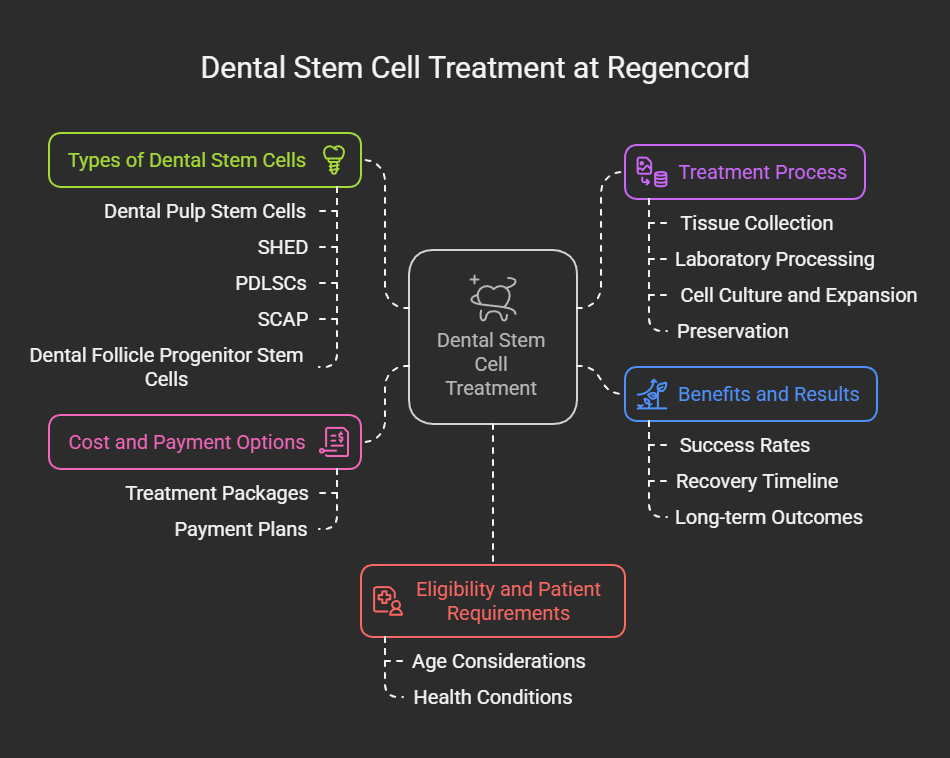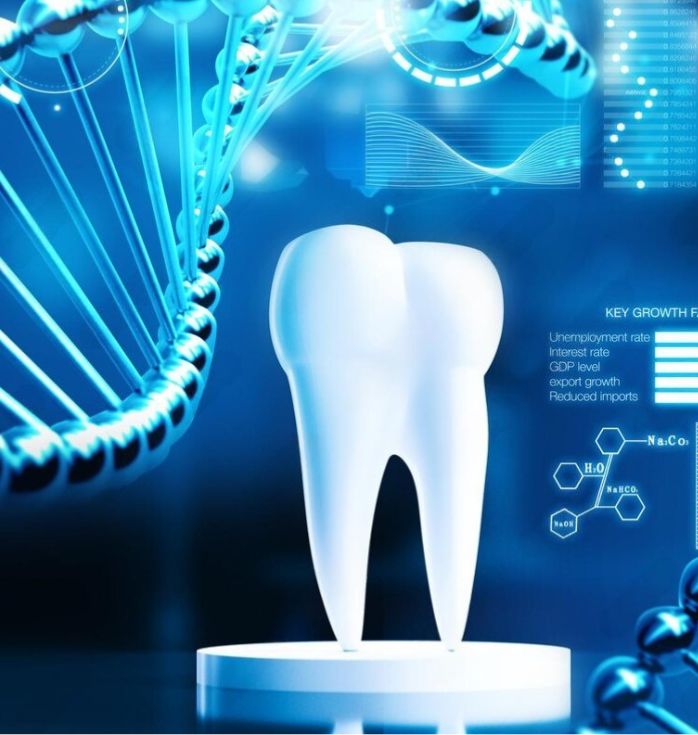

Scientists have made remarkable progress with dental stem cell treatment in regenerative medicine. These treatments work especially when stem cells from teeth come from naturally shed baby teeth that show amazing healing potential. The specialized stem cells in teeth can develop into different tissue types – from bone-like cells to fat cells and even nerve cells. This versatility makes stem cells from teeth incredibly useful for many medical treatments.
Tooth banks now operate successfully in Japan and Norway, showing how stem cell dentistry has gained widespread acceptance. The treatment appeals to many patients because collecting the stem cells from teeth requires no pain and involves a simple procedure. Doctors can safely preserve these cells in frozen storage for years to come. Regencord in Pereira now offers this revolutionary stem cell tooth treatment at reasonable prices. Their services cover everything from the first consultation through to monitoring results over time.



Teeth contain stem cells with special features that make them unique in regenerative medicine. These amazing cells can grow indefinitely and change into specific cell types when certain molecules signal them to do so. As these cells change into different types, the body uses its natural healing powers to repair damaged dental tissues.
Dental stem cells are multipotent cells that live in various dental tissues and serve as the body’s repair system. They help renew cell populations and keep tissues balanced. Dental tissues provide the most available source of mesenchymal stem cells, which doctors can get through simple stem cell isolation procedures. These cells also show remarkable abilities to regenerate both dental structures and other body tissues.
Research has revealed several different groups of dental stem cells, each with its own special qualities:
Dental stem cell treatment involves several advanced steps. Doctors collect stem cells during regular dental procedures, like wisdom tooth removal or planned surgeries. They preserve the extracted tissue immediately using special methods to keep the cells alive.
Labs process the collected tissue following the exact steps. They clean the surface with phosphate-buffered saline solution and disinfect it carefully. The pulp tissue gets separated and mixed with specific enzymes—collagenase Type I and dispase—for an hour at 37°C. The mixture passes through a 70-micron filter to separate single cells. Scientists then grow these cells in a special medium, and they can see colonies within 24 hours.
Scientists store these cells long-term in liquid nitrogen vapor below -150°C. A new magnetic freezing method called the Cells Alive System (CAS) helps more cells survive—up to 83%.
These cells help treat many dental conditions. When placed in damaged dental tissues, they change into needed cell types and release growth factors that help healing. Dental stem cells have helped regrow lost periodontal ligaments, fix infected tooth pulp, and might even regenerate whole teeth.
New treatments use low-power lasers to make human dental stem cells form dentin—the hard, bone-like material that makes up most teeth. This breakthrough means scientists don't need to handle stem cells in labs anymore, which makes treatment simpler.

Regencord’s dental stem cell treatment follows scientific protocols that ground their approach. The facility follows American Association of Tissue Bank guidelines that have existed for 19 years. This commitment gives patients the highest standards of care throughout their experience.
A full picture determines if patients qualify for stem cell treatment. The medical team assesses the patient’s health status and discusses possible outcomes. Accepted patients receive a complete explanation of the procedure. The dental team sets realistic expectations and answers their questions.
The medical team creates a custom treatment strategy after the first consultation. This planning phase includes:
The treatment happens in several arranged phases:
The team follows regulatory guidelines strictly to maintain process quality and safety. Several follow-up visits help monitor recovery and handle possible complications. Detailed documentation tracks each step from tissue collection through final preservation. This approach ensures quality control and traceability.
The procedure uses advanced molecular techniques and specific bioactive and biodegradable supports. These supports aid efficient extracellular matrix production. This step converts treated areas into functional tissue with proper geometry and composition.


Patients need to understand the financial side of dental stem cell treatment to make informed decisions about their care. Regencord in Pereira offers budget-friendly prices and flexible payment plans, making this advanced treatment accessible to more people.
Regencord offers complete stem cell therapy packages that match each patient’s needs. The simple treatment package costs €6,306 or USD 6,900. You can also choose packages with hotel stays at €7,200 or USD 7,900.
Each treatment package includes:
Regencord keeps its costs transparent, but these items aren't included:
Regencord accepts many payment methods because they know everyone's financial situation is different. Stem cell treatments need a big investment, so they give you several ways to pay:
Regencord's prices are much lower than Western countries, where similar treatments cost between USD 15,000 to USD 30,000. Their location in Pereira, Colombia lets them offer high-quality care at budget-friendly rates.
Most insurance providers label stem cell treatments as experimental procedures, so you'll likely need to pay out of pocket. Regencord's team will help you explore possible coverage options and understand what you need to pay.
The facility shows you exactly what everything costs before treatment starts. This helps you plan your finances without any surprise charges.
Remember to plan for these extra costs:
Your investment in dental stem cell treatment at Regencord reflects their steadfast dedication to quality. Their labs follow strict rules and use advanced equipment with careful protocols to give you the best possible results.
Clinical studies show remarkable results in dental stem cell treatments that highlight their potential in regenerative dentistry. Research shows an 82% success rate in stem cells from human exfoliated deciduous teeth (SHED) isolations. Dental Pulp Stem Cells (DPSCs) show a 70% successful isolation rate.
Dental stem cell treatments work beyond just isolation rates. Studies reveal that stem cell therapy achieves more than 90% success in tooth formation. Clinical trials with autologous SHED implantation helped all patients regenerate highly vascularized dental pulp. The results look even better as tooth root development continued in all SHED-seeded samples.
Bone marrow-derived stem cells show great potential for bone regeneration. Doctors performed 40 sinus lifts with 42 implants, and all showed primary stability. After three years, these procedures created well-vascularized regenerated bone with a compact structure.
Patients start recovering within the first week after treatment. Stem cells from deciduous teeth stick to culture dishes in about seven days, while dental pulp stem cells take around eleven days. This quick cellular response helps speed up healing.
Benefits after treatment include:
Results show lasting therapeutic benefits. Doctors watched patients for 66 months and found no health issues, proving both safety and effectiveness. The regenerative abilities go beyond simple repair, as shown by:
These treatments can help beyond dental applications. Dental stem cells might work for heart therapies and brain tissue regeneration. They can create cartilage and adipose tissue, opening up more treatment options.
Clinical evidence supports better healing through higher levels of growth factors and immune modulators. Treatment boosts levels of:
Gingival mesenchymal stem cells (GMSCs) play a vital role in reducing inflammatory responses by:


Dental stem cell treatment success starts with the right patient screening and eligibility assessment. Healthcare teams assess several factors to determine who qualifies for the procedure and ensure the best possible outcomes.
Research shows dental stem cells keep their regenerative potential in patients of all ages, though some factors affect their collection. Patients under 25 years old give the highest quantity of dental pulp stem cells. Notwithstanding that, baby teeth remain valuable as stem cell sources, though they yield fewer cells than wisdom teeth.
Baby incisors and canines work great as sources for children when they keep at least one-third of their root structure. Baby molars take longer to resorb naturally, but they become good candidates when removed early for orthodontic reasons.
Some medical conditions don't automatically rule out patients from dental stem cell treatment. Studies show doctors can harvest stem cells even from patients who have infectious diseases, though these cells must only be used for the same patient.
The main eligibility criteria for health include:
Medical conditions common among stem cell treatment candidates include:
Dental teams perform full examinations about two weeks before scheduled procedures. Studies show that 85.5% of patients get their assessment during this timeframe. Medical teams watch closely for:
Some conditions require extra precautions rather than complete exclusion. For example, patients with bleeding disorders or weakened immune systems might need modified treatment approaches. The dental team works closely with other healthcare providers to coordinate complete care effectively.
Dental stem cell treatment represents a breakthrough in regenerative medicine at Regencord’s specialized facility in Pereira. Research proves these procedures are safe and work well, with tooth formation success rates hitting 90% and benefits that last many years.
Patient screening helps achieve the best results by considering age and health factors. Regencord’s complete approach combines cutting-edge facilities with affordable prices to make this groundbreaking treatment available for patients who need advanced dental care.
The facility follows international standards and has documented success rates that make dental stem cell treatment a solid choice for patients who want regenerative dental procedures. Scientists continue to discover new uses and advantages. Patients should expect more exciting developments in regenerative medicine soon. Restore your smile with Dental Stem Cell Treatment at Regencord Pereira. Contact us today to learn more about this advanced regenerative solution!
Stem cell therapy in dentistry is an evolving field with potential applications in areas like tooth regeneration, periodontal disease treatment, and bone repair. Here are three main processes of dental treatment that a Regencord may utilize:
Stem cells are unique cells with the ability to develop into various cell types and repair damaged tissues. They are used in regenerative medicine, including treatments for cancer, neurodegenerative diseases, and injuries. Sources include bone marrow, cord blood, and embryos.
+1 888-540-4101


